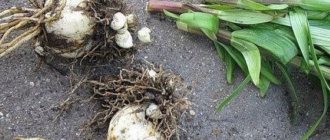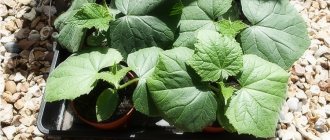To enjoy the luxurious blooming of roses every year, you must initially properly plant the seedling in a good place, and then regularly water, feed, prune, mulch, treat and perform other care procedures. In general, flower culture is quite whimsical and capricious. In addition, in some cases the plant needs to be replanted, but the procedure must be done correctly so as not to harm the bush or destroy it. Let's look at why a transplant is needed and how to perform it correctly.
Why do you need to transplant a rose bush to another place?
Like any other gardening procedure, there must be certain reasons for transplanting a rose to a new place:
- If the bush grows strongly, the plants can become a nuisance (for example, when initially planted next to garden paths, a house, a gazebo, a garden bed or another flower garden).
- Due to growth, the bush may experience a deficiency of nutrients and moisture in the soil; if it is not replanted in time, this will have a bad effect on the flowering and condition of the plant, and may even cause the death of the plant.
- The place where roses grow may be needed to build some object on the site, plant a tree, create a bed or flower arrangement.
- Timely rejuvenation of the bush, which is carried out for most perennial flowers and berry crops. Grafted roses should be transplanted to a new location approximately 15 years after planting, and self-rooted (ungrafted) roses should be transplanted approximately after 10 years.
Latest materials
Polymer waterproofing
All surfaces and structures that have a chance of coming into contact with water need to be protected from moisture. In a country house this is the base of the house, the basement, the roof. Inside the building there is a toilet and a bathtub, where leaks and flooding are likely. Inside the building - it could.
Modern polymer waterproofing is a reliable barrier to moisture in the bathroom. Polymer-based waterproofing coating
Cement waterproofing provides protection for various structures from moisture. Materials of this group are often used due to many advantages. When the components are mixed correctly, high reliability is ensured and service life increases.
Door opening limiter
Plastic windows have long proven their practicality and functionality. One of their main advantages is ensuring tightness. However, this can also be considered a certain disadvantage, because the air in the room must be periodically renewed. Here comes the arrival.
Door stop material
Plastic double-glazed windows operate in two modes: slot micro-ventilation and full opening of the sash. However, such provisions are often insufficient. A practical and affordable solution to the problem is a window opening limiter. The device holds the sash on.
Optimal timing for transplanting a rose to another location
Roses can be transplanted to a new location both in spring and autumn. It is believed that it is better to perform the procedure in the autumn, this is due to the condition of the plant: it has retired. Thus, the procedure can be carried out without disturbing the bush.
Note! The answer to the question “when is it better to replant roses, in spring or autumn” largely depends on where the summer resident lives. In regions with mild winters, it is better to perform the procedure in the fall. But in regions with cold and harsh winters - always in the spring.
The appropriate timing of the procedure in the spring to another place is determined by the condition of the bush: it needs to be replanted in the spring before the buds and leaves of the rose bloom , when the plant is still dormant.
If you transplant a bush in the spring too late, then when the buds awaken, the plant will begin to consume a lot of nutrients, and since the root system has not yet fully taken root in the new place, the plant will be depleted.
If for some reason an urgent transplant of a rose bush is needed in the summer , then it must be done carefully. The most important thing is to wait for a cool, cloudy day. When replanting, be sure to shorten the above-ground part (to 40-50 cm); if the bush is very old, then the shoots must be completely removed.
The timing of transplanting a rose bush to another place in the fall is determined by climatic conditions. The procedure should be carried out 3 weeks before the onset of frost (after all, the plants must have time to take root in the new place).
Conventionally, the following dates for transplanting roses can be distinguished: spring and autumn:
- In the middle zone (Moscow region) - mid and end of April/end of September, first half of October.
- In Siberia, the Urals, the North-West (Leningrad region) - at the end of April, at the beginning of May / throughout September.
- In the South - end of March/second half of October.
Advice! Regardless of the timing, it is recommended to perform the procedure on a cloudy day or in the evening.
Top 12 best perennials
Lately I have been very concerned about how to work less but live beautifully.
The desire, of course, is not new and not original, but, nevertheless, I want to be lazy.
Therefore, I study the topic of perennials again and again.
How to choose the best perennials?
In this case, it is especially important when the external beauty of a flower is combined with endurance. Let me offer you 12 types of flowers that are actually a win-win option.
Let me offer you 12 types of flowers that are actually a win-win option.
These perennials are unpretentious and the most beautiful among their kind.
They are suitable for a flower garden that is easy to care for, but at the same time pleasing to the eye.
Astilbe is an amazing plant. How many other perennials do you know that can bloom beautifully and luxuriantly in dense shade? It is for decorating shady corners of the garden that astilbe is most often used.
Astilbes come in low-growing and gigantic varieties - the height varies depending on the variety, starting from 20 centimeters and up to 1 meter.
The panicle inflorescences come in different colors - also depending on the variety - white, red and pink. Astilbe begins to bloom in July and then continues for 10 weeks.
Soil moisture is important for astilbe - keep an eye on this to water the plant on time.
Japanese anemone (autumn)
Autumn anemones are stunningly elegant flowers. Perhaps these are the most beautiful perennials among the unpretentious ones. Large flowers with delicate petals flaunt on long peduncles. Anemones come in a variety of colors, from white to bright red, and bloom from late August. They look great not only in the flower garden, but also as a cut flower.
Anemones prefer fertile, humus-rich soils and partial shade.
In central Russia, various hybrids of Japanese anemone (Anemone japonica) feel good.
Helenium hybrid (Helenium) is one of the longest-flowering and profusely flowering perennials. Some varieties bloom almost all summer. You can choose the varieties of heleniums so that these beautiful perennials bloom in your garden from June until October.
Heleniums love the sun, the choice of soil for them is not important, the main thing is regular watering.
Recommended varieties – “Waltraud” (orange large inflorescences, height 80-100 cm, early variety), “Rubinzwerg” (ruby-red inflorescences, height 70-80 cm, mid-early variety), “Septembergold” (bright yellow inflorescences , height 110 cm, late-flowering variety).
Where to transplant a rose in the garden: choosing a place and soil
Garden roses are very demanding in terms of where they are grown, so for replanting (as well as for planting) you need to choose the most comfortable and suitable area. The survival rate of the plant in a new place and further cultivation and flowering depend on this.
The main requirements for a place for transplanting a rose: it should be well lit by sunlight, protected from wind and drafts (there should be no air stagnation). In this case, it is desirable that during the hottest afternoon hours the plants are in light shade.
It is very important to avoid swampy, waterlogged areas, for example, locations with high groundwater levels, lowlands in which water accumulates. When transplanted to such a place, the roots of the plant will certainly rot and the bush will die.
The soil for growing rose bushes must be fertile, loose, water- and breathable, and have neutral or slightly acidic acidity. Heavy, clayey, too dense soils, as well as too light, sandy soils are not suitable.
Advice! It is advisable to transplant the rose to a new place, which is similar in conditions to the old location. Thus, the bush will take root faster and easier.
Preparing the hole for planting
Usually the hole for a new bush is prepared three weeks before planting it. It is not inferior in size to the hole from which the rose bush was removed. The hole is usually 60 cm in diameter and 45 cm in depth.
A rose, transplanted according to all the rules, will give you a wonderful flower that will become a real decoration of your garden.
The bottom needs to be loosened and the soil and compost sprinkled. Sprinkle regular soil on top to avoid burns to the roots of the bush. Before planting directly, the hole must be thoroughly watered.
How to prepare a planting hole: dig and fill
The dimensions of the hole should be slightly larger than the earthen ball of the rose. Approximate dimensions: width - about 70 cm, depth - 60 cm.
Then you should fill the planting hole with a fertile soil mixture: humus, fertile soil from the top layer of soil, sand (1:2:1), and, if possible, you can add turf soil and peat. It is useful to add a tablespoon of ash to the mixture.
If you are going to replant several bushes, then planting holes need to be made at a certain interval. The distance between roses in open ground is determined by the type of plant:
- Hybrid tea, polyanthus roses, Floribunda - between them you need to maintain a gap of 0.3-0.6 meters.
- Climbing, standard - a distance of about one meter.
- Border roses - 25-30 centimeters.
Recommendations for caring for a transplanted flower
After transplantation, weakened plants need attention, careful care and timely implementation of all care procedures. Let's look at them in Table 1.
| Reception of agricultural technology | Necessary Requirements |
| Watering | Roses are distinguished by their deeply penetrating roots, which are able to absorb moisture from the lower layers of the soil. But after transplanting, you cannot do without watering until the underground system grows. For one bush you need to spend 3-4 buckets of water. Carry out the procedure once every 3 days early in the morning or in the evening at the root, avoiding moisture on the shoots |
| Weeding and loosening the soil | Weeds take away valuable moisture and nutrients from roses. Therefore, they need to be removed in a timely manner. To improve the absorption of moisture and oxygen, the top layer of soil should be loosened with a spatula or hand cultivator |
| Prevention | Carry out preventive treatments using safe means. Regularly inspect the plant for pests and disease symptoms. If they are detected, promptly take appropriate measures |
| Top dressing | The best organic fertilizer for roses after transplantation is manure. When replanting in spring, it is worth doing mineral fertilizing to restore the balance of minerals in the soil. |
| Trimming | Transplantation in spring or summer is accompanied by mandatory pruning. The stems need to be shortened by 20-30 cm, possibly more depending on the type of crop, trying not to affect the young shoots |
| Preparing for winter | Autumn replanting involves further preparation for frost. Sprinkle the base of the bush with earth in the form of a 15 cm hill, protect the trunk from cracking and damage by spruce branches. |
We also recommend watching the video with recommendations:
Beautiful and well-groomed roses are the dream of every gardener. To achieve the desired result, you must follow the rules for replanting the plant, carry out timely feeding, watering, pruning and other agrotechnical measures.
Step-by-step instructions for transplanting a rose to another place with a lump of earth
This method of transplanting a rose with a whole lump of earth is the main one. The principle of the procedure is simple: you need to carefully dig up the roots along with a lump of earth, and plant the whole plant in a new planting hole without damaging the lump or roots.
Important! Before the procedure, be sure to wear thick gloves on your hands to avoid scratching your hands.
The rose transplantation scheme is quite simple:
- Step 1: A few hours before transplanting, you need to water the plant (if the soil is wet, then watering is not necessary).
- Step 2: To make it easier to work with the bush, it is recommended to tie the shoots with twine.
- Step 3: Then you need to very carefully dig around the bush along the projection of the crown. You need to make a ditch around the plant and dig it under the base of the rose.
- Step 4: If the plant’s roots are too long and make it difficult to reach the earthen ball, then you can chop them off with the tip of a shovel (then immediately treat the area with brilliant green or charcoal).
- Step 5: Then you need to carefully pry up the bush with a shovel, and grasping the trunk with your hand, pull out the bush. In this case, everything needs to be done extremely delicately so that the lump of earth with its roots does not fall apart (you can immediately wrap it in a bag or burlap and carry it to a new place in this form).
Advice! If a bush is large in size and it is difficult to simply pull it out, then you can place a crowbar (or a long wooden handle) under its base. And thus pressing on the crowbar, you need to pull out the plant.
- Step 6: Place the rose bush and the earthen ball in the hole. The bush should be in a new place at the same level as it grew before (meaning the location of the root collar).
- Step 7: Fill the voids in the hole with nutrient soil, compact the soil with your hands.
- Step 8: Create a circle around the trunk by making a roller around it.
- Step 9: Water generously (water should be added gradually as it is absorbed). You need to pour about 20-25 liters of water under one bush.
After regular water, you can water it with a solution of a root formation preparation, for example, Kornevin. Thanks to this, the plant will quickly and easily take root in a new place.
- Step 10: After replanting, it is useful to mulch the area near the trunk, but the mulch should not touch the trunk. Suitable materials: peat, rotted sawdust, humus. The optimal layer size is about 5-7 cm.
Advice! If you want to replant a blooming rose, then you must definitely trim all the flowers and buds. Better yet, wait until autumn.
When to replant indoor plants in June 2022
There are often cases when everything seems to have been done correctly, but the transplanted house flowers get sick. The foliage withers or turns yellow, the flowers do not want to grow for a long time. It is possible that the procedure was carried out on a forbidden day, when the roots are vulnerable, the plants have little strength, so they begin to hurt.
To prevent this, find out when, according to the Lunar calendar in June 2022, are favorable days for replanting indoor flowers:
- You can safely plant and replant any plants on the 1st-4th, 17th, 22nd, 23rd, 28-30th. These are the most favorable dates. Even if your hand is “heavy,” the flowers will still take root.
- Neutral days: June 12, 13 and 18. You can do plantings and transplants, but if possible, it is better to wait for a favorable date.
- It is better to plant or replant bulbs and corms (cyclamen, hyacinth, lilies, daffodils and others) on June 7 and 8.
Since a wide variety of plants usually grow in the home Green Corner, there are separate planting days for them:
- cacti and other flowers with spines adapt faster if they are transplanted on June 3;
- for flowering ones (orchids, azaleas, anthuriums, roses and others) the most favorable days are: 4 and 28;
- climbing plants (cissus, scendapsus, ivy, etc.) are best replanted on June 20;
- decorative deciduous - 23rd.
How to replant roses by dividing the bush
Dividing the mother bush is one of the ways to propagate plants. This particular rose is propagated extremely rarely using this technology. Moreover, it is advisable to divide the bush only with own-rooted roses (i.e., ungrafted ones). However, if you are interested in transplanting a rose to a new place by dividing the bush, you can follow the procedure according to the following instructions:
- Dig up a rose bush using the same technology described just above.
- Carefully clear the plant's root system of soil.
- Divide the bush using a sharp knife or axe. You can divide it into two or three parts, and each part should have a powerful root and a couple of young annual shoots.
- Now it is very important to disinfect the damaged area to prevent infection. For example, you can dip the roots in a solution of Fitosporin, or anoint them with brilliant green.
- Place the cuttings in the planting holes, cover with soil, compact the soil, and water generously. This stage is performed as with a regular transplant.











